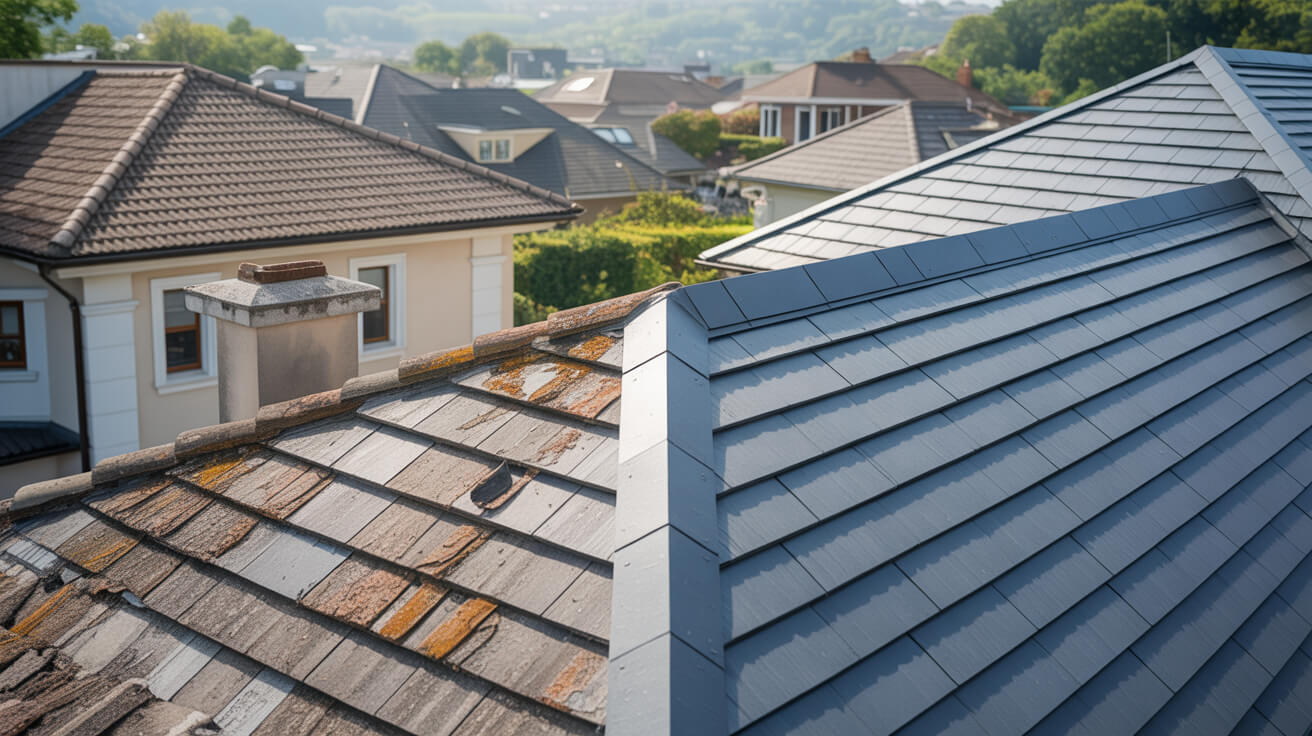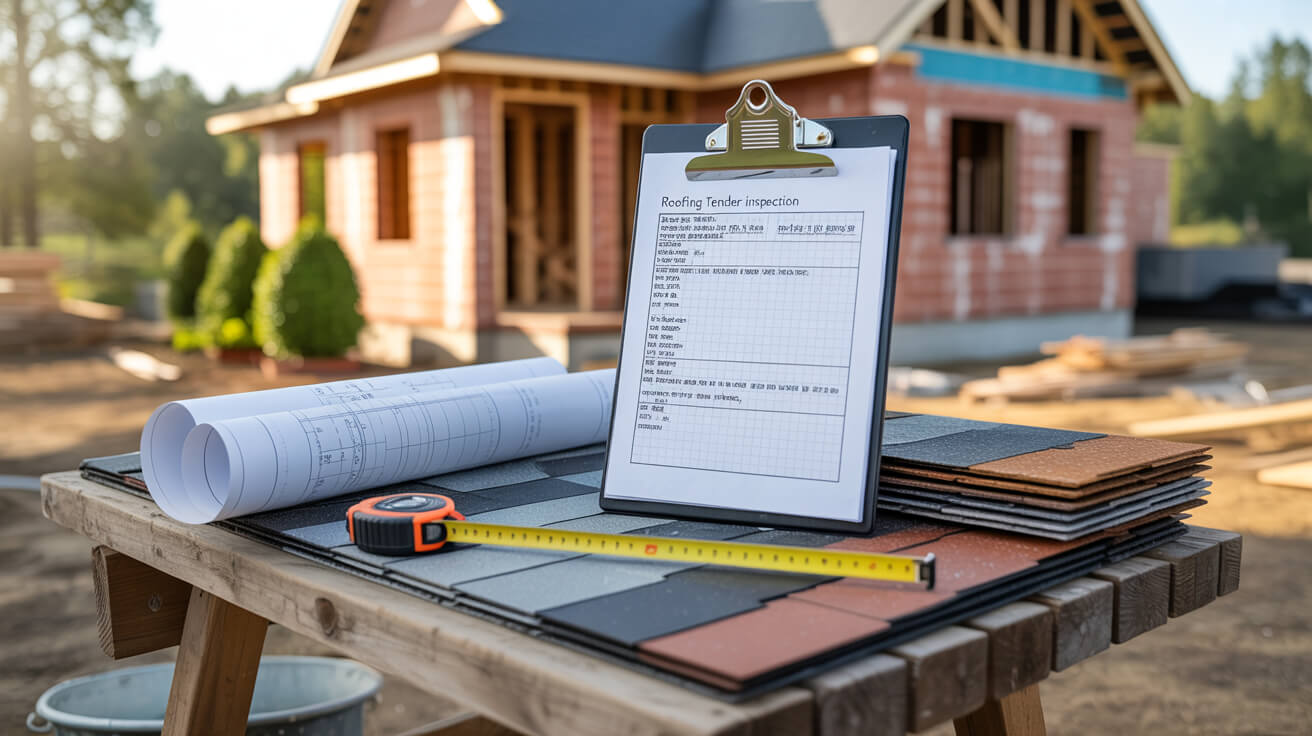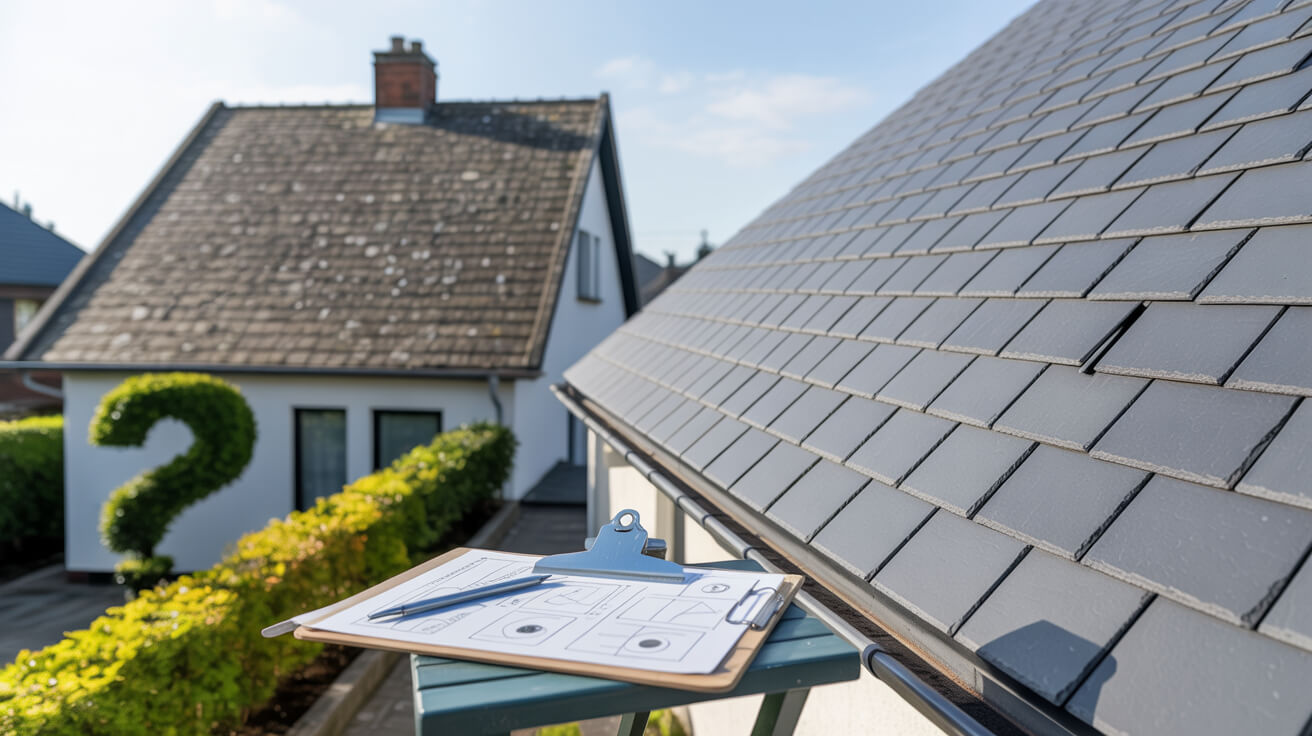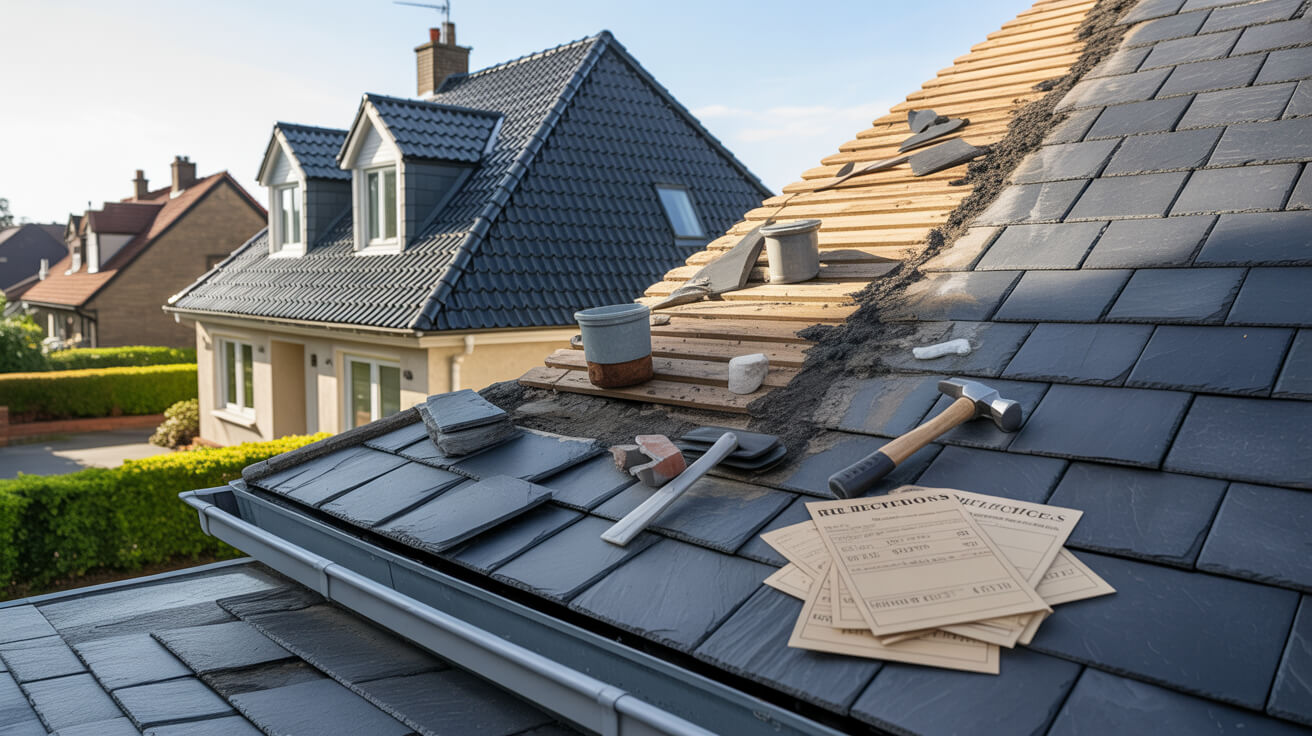 Cut Edge Corrosion The Hidden Risk Nobody Checks
Cut Edge Corrosion The Hidden Risk Nobody Checks

What Is Cut Edge Corrosion and Why Does It Matter?
Cut edge corrosion is the gradual, often unnoticed, deterioration of metal roof sheet edges exposed during installation, shearing, or weathering. These unprotected cuts, especially prevalent in steel roofing and cladding, become the starting point for accelerated oxidation—a process that undermines the protective paint system, allowing moisture, air, and contaminants to invade. Unlike obvious structural failures, this form of degradation creeps in invisibly beneath coatings, quietly threatening not just the look, but the longevity and compliance of your roofing asset.
Routine roof checks by untrained eyes frequently miss the subtle cues. The earliest evidence—fine rust lines, edge flaking, and slight blistering—can stay out of sight until advanced corrosion takes hold. That is why genuine risk lies not in what you can see, but in what gets ignored. If property, asset, or facility managers want to avoid surprise costs and asset value loss, understanding and acting on this hidden threat is essential.
Key technical cues:
- Oxidation arises directly at the uncoated “cut edge,” where steel meets the environment.
- Corrosion can start months or even years before it is noticed.
- Even premium factory-coated sheets are vulnerable the moment on-site cuts or abrasive weathering occur.
You can take control of your building’s long-term resilience by focusing on the unseen. Each overlooked edge is a risk multiplier—and you possess the ability to change your building’s future by recognizing this now.
How Do Environmental and Installation Factors Cause Corrosion?
The birth of edge corrosion is never random. It emerges from a predictable interplay between environmental stressors and installation missteps—a confluence that can tip even high-spec roofs into early decline.
Environmental accelerators:
- UV exposure: Harsh sunlight degrades paint polymers, initiating micro-cracks that let water in.
- Moisture and humidity: Persistent condensation and rainfall feed oxidation cycles, especially at sheet ends.
- Airborne pollutants: Acidic rain, salt spray (coastal environments), and industrial fallout react with exposed steel, intensifying edge attack.
Installation vulnerabilities:
- Improper edge sealing: Shortcuts on-site—neglected or poorly-applied sealants—leave steel edges bare.
- Low-grade materials: Economy-grade steel and coatings erode faster, lacking adequate zinc or robust paint chemistry.
- Mechanical abuse: Heavy-handed fixing, careless trimming, or inadequate overlaps multiply vulnerability.
Industry research reveals roofs cut with Power Tools without immediate post-cut edge protection fail up to 50% faster under industrial or coastal conditions. When a contractor or project manager signs off without verifying these details, the problem begins.
Comparative insight:
A school roof in Sussex and a logistics site in Bristol—both installed the same year—showed diverging fates after three winters. Where edge-protection paint was skipped, corrosion advanced to visible browning and under-flashing leaks. The properly detailed roof, maintained with timely touch-ups, retained its warranty, clean look, and value. That is the difference in attention to detail at the outset.
Review your site’s current protocols. A minor oversight today—one poorly sealed seam, a missed edge—could add years of future cost or invalidate a warranty. Edge vigilance is the line between sustainable performance and surprise failure.

What Signs and Technologies Reveal Early Corrosion?
Detecting cut edge corrosion at its most treatable stage relies on an understanding of visual triggers and deploying newer diagnostic techniques designed for accuracy and minimal disruption.
Visual red flags:
- Rust flecks or streaks at sheet ends and overlaps.
- Localized bubbling or peeling of factory coatings along seams.
- Slight staining beneath roof fixings, gutters, or drip lines.
These are not always glaring; early-stage corrosion hides behind paint or is washed away by weather until the underlying metal surrenders. This is why routine “visual checks” and damp roof walks often miss the real problem.
Technological advances:
- Thermal imaging: highlights micro-areas of heat retention or loss—a sign of sub-coating oxidation or internal moisture.
- Digital moisture meters: detect hidden damp in roof laps or beneath surface defects, even when no water is visible.
- Endoscopic cameras: can inspect under seams and abutments, giving access to otherwise inaccessible corrosion spots.
Best practice:
A scheduled annual survey by a specialist is more effective than ad hoc visual checks by maintenance staff. Many property owners only uncover the issue after a failed insurance inspection or when warranty claims are rejected for “neglect.”
If you’re uncertain about your assets, invite an expert before deterioration moves past the easy-fix stage.
A quick, data-driven assessment today is far less disruptive—and cheaper—than addressing widespread corrosion or failed roofing systems later.
Why Does Neglected Corrosion Threaten Structural Integrity and Value?
Allowing cut edge corrosion to persist transforms a small issue into a rolling crisis that chips away at your asset’s structural backbone and resale value. Facility managers often downplay these risks until faced with compounding costs, safety investigations, or value reappraisals.
Consequences in sequence:
- Structural weakening: Corroded sheet edges are thinner, lose load-bearing strength, and become more prone to mechanical failure, especially in high wind or impact events.
- Spread of damage: Humidity and rust migrate under sheeting, affecting fixings, purlins, and ultimately sub-roof structures.
- Warranties voided: Most manufacturers and insurers enforce strict maintenance and protection clauses. Documented neglect invalidates coverage and exposes you to major self-funded repairs.
- Asset depreciation: Surveys noting visible corrosion can slash property values, create obstacles in refinancing, insurance renewals, and impact risk profiles.
Comparative data shows that proactive buildings retain over 90% of their original roof value after 15 years, while neglected sites drop below 65%—a six-figure difference for most commercial portfolios. That’s not just a theoretical risk; it’s a line-item loss on your balance sheet.
By approaching your maintenance posture as a future investment, you not only lock in asset value, you shield against the reputational and operational shockwaves that follow unchecked structural decline.
How Can Regular Maintenance Prevent Corrosion Progression?
Consistent, proactive maintenance is the only proven safeguard against the progression of cut edge corrosion. This moves you from a reactive, crisis-driven approach to a system of predictable asset preservation.
Best-in-class routines:
- Scheduled inspections: Commission at least an annual deep-dive, focusing on vulnerable seams, overlaps, and sheet ends.
- Edge touch-ups: Apply specialist coatings or sealants at all cut or abraded areas immediately after installation and as part of ongoing maintenance.
- Cleaning protocols: Remove debris and pollutants from roof surfaces and gutters regularly—organic buildup traps moisture and fosters corrosion.
Industry regulatory guidance, including BS5534 and manufacturer guides, prescribes pre-emptive maintenance as condition of warranty. JG Leadwork and Roofing’s own long-term portfolio reviews show that buildings with documented maintenance suffer less than half the repair costs over a 15-year lifecycle compared to hands-off facilities.
Comparative insight:
A shopping centre in Kent, inspected and cleaned every six months, has reported zero major corrosion events over a decade—compared to an adjacent retail block facing significant cladding replacement after only seven years due to preventable neglect.
Your maintenance program is the most controllable factor in long-term roofing performance. Delay, and you’ll pay not just in money but in peace of mind and building reputation.

How Can Advanced Diagnostics Enhance Corrosion Detection?
Relying on basic visual checks or assumption-based routines no longer suffices. Modern diagnostic tools have not only enhanced the accuracy and speed of corrosion detection but have also greatly reduced the risk of hidden defects going unmanaged.
Innovations driving results:
- Thermal imaging cameras: reveal temperature anomalies linked to sub-surface corrosion. The subtle heat difference between healthy and oxidizing metal is a non-invasive, high-confidence red flag.
- Digital moisture probes: assess the presence of undetected water or condensation, mapping areas at risk before rust becomes visible.
- Drones and high-resolution photography: allow for the inspection of hard-to-reach areas and extensive mapping of entire roofing landscapes for systematic analysis.
Integration with expertise:
JG Leadwork and Roofing uses these technologies alongside traditional methods, blending deep trade insight with the forensic accuracy of new tools. In hands-on casework, our teams have uncovered hidden corrosion that basic checks would have missed—allowing interventions that saved clients from emergency shutdowns and costly replacements.
Switching to advanced diagnostics isn’t just a technical upgrade; it’s a leap in risk management, lifecycle control, and regulatory compliance. It transforms your inspections from reactive paperwork into powerful, predictive asset protection.
What Are the Operational and Financial Costs of Ignoring Corrosion?
Ignoring the signals of cut edge corrosion transforms what might be a simple, affordable intervention into an operational and financial spiral. The edge you didn’t repair, the leak you downplayed—they all build to an avoidable, snowballing burden.
Cost scenarios:
- Direct repair escalation: A £500 sealant application in year one can avert a £25,000 sheet/structural replacement in years five to ten.
- Operational disruption: When neglected corrosion leads to wind or water ingress, businesses may face shutdowns, tenant displacement, and loss of trading licenses.
- Insurance and warranty denial: Claims for repairs can be rejected if records reference absent maintenance or visible, neglected corrosion. The building owner is then fully liable.
- Asset depreciation: Persistent corrosion noted on surveys or during refinancing/application processes can trigger revaluations, stalling sales or necessitating costly restitution to satisfy new buyers.
Real-world illustration:
A property management group overseeing a Midlands warehouse ignored minor staining on high-level roof sheets; by year six, leaks penetrated internal linings, necessitating tenant evacuation, major claims, legal battles, and a £120,000 write-down on asset value—all from an issue that began at a single, untreated edge.
Shifting from neglect to active stewardship puts these risks back under your control. The question is never the price of routine intervention—but the compounding price of deferred action.
Book Your Free Consultation With JG Leadwork and Roofing Today
The difference between catching cut edge corrosion early and discovering it after substantial asset loss is a single decisive action. Your buildings and portfolio deserve not just generic maintenance but specialist, evidence-driven intervention from experts who know what hidden corrosion looks like, how it grows, and how to lock in long-term value through proactive management.
When you connect with JG Leadwork and Roofing, you unlock:
- Comprehensive, non-intrusive inspections with industry-leading diagnostic tools.
- A pragmatic, transparent assessment tailored to your property’s unique vulnerabilities.
- Guidance unconstrained by upsells or generic solutions—focused solely on preserving your building’s value and compliance.
Every day corrosion goes ignored, the path to avoidable cost, business disruption, and asset devaluation grows shorter. Inaction is the costliest risk; expertise is your insurance.
Book your expert inspection with JG Leadwork and Roofing today—because the cost of inaction is never truly hidden.
Frequently Asked Questions
What Is Cut Edge Corrosion and Why Does It Matter?
Cut edge corrosion is the silent saboteur lurking at the borders of your roof’s security. When factory-coated metal sheets are trimmed or overlapped during installation, the bare steel or unprotected edges left behind become infiltration points for rain, air, and pollutants. At first, these edges appear flawless, protected beneath a flawless-looking roofscape. Yet even the most robust coating cannot defend areas that were never covered or subsequently breached.
The Technical Reality Beneath the Surface
At the atomic level, cut edge corrosion sets in where the zinc or paint coating has been compromised—whether at an overlap, a gutter, or around a cut for a roof penetration. Atmospheric oxygen, coupled with moisture, initiates an electrochemical process, triggering rust. Over time, oxidation progresses, causing paint to peel, steel to thin, and eventually producing visible rust lines and blisters that creep along the metal’s edge. Much of this process is insidious—by the time it’s visible from ground level, structural compromise or leaks may already have begun.
Why Routine Checks and Visual Sweeps Fail
Many facilities managers or property owners rely on periodic walkarounds or surface-only surveys. These steps rarely identify the incremental progress of cut edge corrosion—particularly at height, in overlaps, or beneath gutter lines—and so obvious damage only surfaces when function is already lost.
The Unseen Risk to Your Investment
The progression from imperceptible corrosion to failed roof edge isn’t just cosmetic. Unchecked, cut edge corrosion undermines the very fabric of your building—a risk amplified on commercial assets where insurance or warranty claims often require evidencing regular, proactive inspections and repairs. The difference between “caught early” and “reactive” amounts to tens of thousands of pounds and regulatory headaches.
What Protects Your Roof—and Your Capital
- Regular, high-angle or drone-enabled reviews of all cut, overlapped, or gutter-exposed roof areas
- Immediate spot treatment with edge-specific coating systems for any exposed metal
- A maintenance partnership with a roofing contractor whose expertise is rooted in technical detail, not simply surface inspections
Protecting exposed edges isn’t a one-off fix; it’s an ongoing practice that secures operational continuity, preserves asset value, and can bail you out of friction with insurers and inspectors. With every hidden flaw intercepted, your property’s long-term stability becomes one less thing to worry about.
How Do Environmental and Installation Factors Cause Corrosion?
Environmental and installation factors operate together to tip a minor oversight into a systemic, expanding liability. The devil is in the details, and the enemy is relentless.
Environmental Assault on the Edge
Extended exposure to UV rays, freezing winters, acid rain, and airborne salts creates an ever-present corrosive microclimate right where protection is thinnest. Consider that a southern-facing roof in the UK may endure thousands of wet-dry cycles per year, while salt-laden air in coastal sites can double the corrosion risk compared to inland locations.
Environmental Drivers of Corrosion:
| Driver | Mechanism | Frequency |
|---|---|---|
| UV Radiation | Paint breakdown, microcracks | Daily cycle |
| Acid Rain | Direct attack on coatings | Variable |
| Salt Air | Enhanced electrochemical cell | Coastlines |
| Pollutants | Accelerate rust and pitting | Urban/industrial |
Installation Errors and Their Lasting Legacy
Every shortcut taken at install stage magnifies corrosion risk:
- Power Tool Overheating: A hot cut’s “blue edge” is particularly prone to rapid corrosion.
- Missed Edge Sealing: Unpainted or poorly-sealed edges allow the environment direct access to the vulnerable metal core.
- Inferior Materials: Steel of inadequate thickness or low zinc content degrades exponentially faster than specified alternatives.
Even the correct sheet, poorly overlapped or with insufficient fastener pressure, invites capillary action—water draws in by physics, not error, setting up decades-long corrosion you cannot see.
Recognizing the Cost of “It’ll Be Fine”
Every property portfolio can tell a tale: the roof installed to spec—except the specification for edge protection was “forgotten” or ignored. That’s why JG Leadwork and Roofing insists on edge detailing compliance, and why our documented installs routinely outperform, year after year.
A checklist-driven approach, rigorous enforcement of British Standards (e.g., BS5534), and maintaining an archive of installation records doesn’t amount to red tape—they insulate you from avoidable future cost. Your roofing asset is only as durable as its weakest edge—are yours truly protected?
What Signs and Technologies Reveal Early Corrosion?
Detection isn’t a guessing game—it’s a battle for lead time. The earliest signals are easily missed by untrained eyes, but precise pattern recognition and modern tools can change your maintenance fortunes overnight.
Visual Evidence: See the Warning Signs
- Fine streaks of rust descending from overlaps and fixings
- Paint bubbles or tiny blisters at drip edges and gutters
- Dull “scarring” at panel ends where water regularly flows or pools
- Unusual discoloration compared to other sections, especially after winter
Sometimes the earliest symptom is nothing more than an “off” reflection in the shop light during a scheduled walk—with suspicion confirmed on closer inspection. That’s why checklists and interval inspections are essential.
Beyond the Naked Eye: Diagnostic Technologies
- Thermal Imaging: Detects local heat dissipation irregularities, pinpointing subsurface corrosion before it rises to the surface
- Moisture Meters: Identify damp accumulation behind coatings or in lap joints, invisible without destructive investigation
- Drone-Assisted Photography: Provides granular review of every seam, overlap, and fix line across massive commercial zones—no ladder required
Emergent technologies reveal what traditional checks miss, speeding up remediation and providing a digital trail for compliance and insurance.
Inspection Calendar: Building a Routine
- Quarterly Physical Review: Use your facilities team for immediate flagging of visible changes
- Annual Specialist Audit: Engage roofing professionals with advanced diagnostics and expertise, creating a lifecycle report and early warning system
A small investment in diagnostics now builds powerful resilience—and reduces the frequency and cost of large-scale interventions.
Why Does Neglected Corrosion Threaten Structural Integrity and Value?
Every undetected inch of advancing corrosion becomes a threat multiplier as the seasons pass. Thriving portfolios (and stable insurance premiums) hinge on anticipating—not reacting to—those multipliers.
Structural Weakness as an Unwelcome Guest
Corrosion at the cut edge behaves like a broken thread at the hem of a suit: soon the whole garment is at risk. Steel sheets lose tensile strength, overlaps gap and lift, and wind uplift can defeat fixings at a fraction of their designed load.
- Moisture travels beneath coatings, attacking fixings, gutters, and even purlins.
- Tiny open seams lead to insulation dump-outs, water ingress, and—eventually—visible internal leaks or thermal performance issues.
- Trapped water in a depitched lap or poorly detailed gutter cascades damage to interior finishes, fire boards, or electrical fixtures.
Direct Impact on Warranty and Insurability
Manufacturers and insurers harden against risks they can quantifiably link to lack of maintenance. Missed corrosion interventions trigger lost warranty claims, delayed or denied loss adjustment, and increased scrutiny at every claim renewal cycle.
The True Accounting Behind Neglect
Every line-item repair avoided through avoidance is multiplied three, five, even tenfold over time. That “minor” corrosion zone mushrooms the day an event—storm, hail, or a simple annual survey—forces intervention.
Key Insight:
Table: Cost Comparison Over Time
| Action Stage | Immediate Outlay | Compounding Risk | 5-Year Cost |
|---|---|---|---|
| Proactive Touch-Up | Low | Near Zero | £1,000 |
| Deferred Repair | Medium | Escalating | £5,000–£12,000 |
| Neglect/Triage | High | Maximum | £20,000+ |
With every systemized audit, you shift the odds back in your favour, instantly recapturing value and reinforcing your asset’s lifespan. Asset value is always shifting; your roof should anchor, not erode, your balance sheet.
How Can Regular Maintenance Prevent Corrosion Progression?
A roof is not a one-time investment; it is a living system—its resilience is earned through disciplined, cyclical care.
What Does Effective Maintenance Look Like?
- Edge Protection: Inspect and reseal cut and overlapped edges at specified intervals, not just when obvious
- Gutter and Downpipe Cleaning: Regularly remove leaf buildup, silt, and debris to minimize pooling, particularly at laps and gutter interface
- System Reviews: Cross-examine every prior intervention, ensuring new sealants remain intact, touching up any compromised site
- Digital Audit Trails: Archive photos, service reports, and product batch numbers to streamline insurance and warranty claims
The Compound Effect of Consistency
- Maintenance records and audit logs often become the backbone of any future insurance or warranty validation.
- Portfolios managed with proactive care show 25–40% lower lifetime cost of roof ownership versus “run-to-failure” assets.
- Proactive maintenance reduces not only repair cost but also secondary downtime, contractor mobilization fees, and damaged-stock or tenant risk.
Creating a Culture of Prevention
When your organisation, or your contractor, makes maintenance “routine” rather than reactive, the risk landscape tilts dramatically in your favour.
A knowledgeable and detail-focused partner like JG Leadwork and Roofing ensures not only technical skill, but also documentation, process alignment, and compliance—so your asset is never left exposed.
How Can Advanced Diagnostics Enhance Corrosion Detection?
Corrosion’s most devastating effects are often delivered in silence. Leveraging innovation in detection transforms that silence into a valuable early warning.
The Power of Thermal Imaging
Infrared thermography identifies pockets of trapped moisture tied to corrosion zones. Subtle anomalies in heat flow highlight developing faults long before physical inspection or leaks occur. This evidence informs rapid, precisely targeted intervention, not reactive guesswork.
Digital Moisture Sensing
Pinpointing the location and degree of hidden damp allows for strategic patching and targeted edge repair, removing the need for broad disruption or over-engineering.
Drone Survey and AI Mapping
High-resolution drone imagery, coupled with intelligent pattern recognition, builds a digital roadmap of every seam, overlap and penetration. At the scale of modern logistics, manufacturing, or distribution properties, this technology reduces “inspection drag” and flags risk areas with speed and consistency that routine maintenance cannot match.
Table: Traditional Versus Advanced Diagnostics
| Diagnostic Method | What it Reveals | Speed | Coverage |
|---|---|---|---|
| Visual Inspection | Surface rust/blistering | Slow | Partial |
| Thermal Imaging | Subsurface faults | Fast | Broad |
| Moisture Meter | Hidden damp zones | Medium | Targeted |
| Drone Mapping | Overall roof health | Fast | Complete |
Technological mastery, aligned with skilled interpretation—this is the hallmark of a leading-edge contractor. JG Leadwork and Roofing stands at the forefront of this precision craft, providing you peace of mind and data-driven resilience in one service.
What Are the Operational and Financial Costs of Ignoring Corrosion?
Choices made today either fortify or erode tomorrow’s cash flow, reputation, and operational continuity.
Direct Repair Escalation
- Early edge treatment: £500–£2,000
- Delayed multi-panel replacement: £15,000–£50,000
- Gutter, lining, and internal finish remediation: add £10,000–£100,000+
Indirect, But Profound, Impacts
- Forced downtime, impacting tenants, production runs, or asset utilization
- Reputational damage ensuing from visible decay (especially for public-facing or high-value real estate)
- Diminished asset value flagged by surveyors, impacting sales, lending, or rental negotiations
- Insurance premium hikes or outright coverage denial due to failed preventative care documentation
Counterfactuals matter: Imagine discovering corrosion during your pre-sale survey, or facing a denied insurance claim for storm damage because yearly maintenance audits weren’t logged. Every delayed decision is a compounding liability for you and your organization.
The Cost-Benefit Calculation
| Action Timeliness | Upfront Cost | Long-Term Savings | Lost Value Avoided |
|---|---|---|---|
| Prompt action | Low | Maximum | Lease/premium intact |
| Deferred action | Moderate | Reduced | Eventual capital loss |
| Neglect | High | None | Forced asset loss |
Your best investment is in precision-driven early intervention. Nothing secures capital and reputation like foresight and partnership with a roofing firm that not only fixes, but foresees—delivering confidence every time your asset faces sky, rain, or scrutiny.
Book Your Free Consultation With JG Leadwork and Roofing Today
Bringing your portfolio under genuine protection starts with a single, decisive action. JG Leadwork and Roofing offers technical mastery, digital innovation, and an unwavering focus on your asset’s long-term performance.
- Early warning and digital records for insurability and warranty support
- Agile, non-intrusive interventions tailored to the unique risk map of your property
- Strategic roof stewardship, from basic edge check to full lifecycle planning
As risk accelerates with every missed inspection and every delayed repair, your peace of mind grows when you put knowledge—and the right contractor—to work for you.
Reach out for an expert, obligation-free consultation with JG Leadwork and Roofing. Discover how regular, insight-driven reviews can transform your risk profile from hidden liability to protected asset—and convert uncertainty into strategic advantage.



